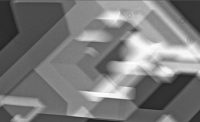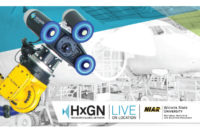Test & Inspection
Digital Radiography for Aviation and Aerospace
The conversion from X-ray film technology to digital inspection systems eliminates cost-intensive film procurement and storage.

The newly developed automatic system test conforms with ASTM E2737-10. Source: Yxlon

In the course of a joint project conducted by technicians and engineers, the digital radiographic inspection system was thoroughly checked for conformity with the new Nadcap standard. Source: Yxlon


Digital radiographic inspection systems have long since become common in many industrial fields. Slowly but surely they are replacing conventional X-ray films, although until recently the supplier industry for aviation and aerospace lacked a generally binding standard for common accreditation in that field in accordance with Nadcap (National Aerospace and Defense Contractors Accreditation Program). With the finalizing of the audit checklist AC 7114/6, since the beginning of 2013 a document now exists that stipulates the audit processes and documentation thereof, and alongside this also contains detailed requirements to be met by the software in a digital radiographic inspection system.
The firm Tital GmbH based in Bestwig in the Sauerland region of Germany manufactures sophisticated investment casting products made of titanium and aluminum alloys for customers in the electronics, optics, aviation and aerospace, medical technology and motorsport industries. When it comes to inspecting the quality of investment casting parts by means of highly dynamic radioscopy, Tital uses the Y.MU2000-D digital radiographic inspection system from Yxlon. System control and data analysis are taken over by the Y.IMAGE 3500 software.
The conversion from X-ray film technology to digital inspection systems eliminates cost-intensive film procurement and storage. Over the past 10 years the commodity price for silver has become six times as expensive. This has led to a massive increase in the costs for film. Digital inspection also dismisses the need for equally cost-intensive handling using developers and associated chemicals. Last but not least, a substantial amount of time is saved: with digital technology an image is ready and waiting in as little as a few seconds. Since the inspection data has already been digitized, data analysis and documentation are additionally simplified.
Faced with the fact that, as a rule, the aviation and aerospace industry insists upon Nadcap certification for radiographic inspection, until now suppliers had been unable to benefit from the kinds of advantages that digital technology has to offer. They had to keep on inspecting using conventional film. Directly following publication of the Nadcap AC 7114/6 standard entitled “Nadcap Audit Criteria for Non-Destructive Testing Facility Digital Radiography, Digital Detector Array (DDA) Survey,” Tital set its highest priority on gaining rapid certification in compliance with this new checklist.
Thorough actual-situation analysis
In many aspects Nadcap AC 7114/6 is based on a variety of ASTM (American Society for Testing and Materials) standards, as well as on the DIN EN 462 standard (Non-destructive testing – image quality of radiographs). In the course of a joint project conducted by technicians and engineers from Tital and Yxlon, the Y.MU2000-D digital radiographic inspection system was thoroughly checked for conformity with the new Nadcap standard together with the Y.IMAGE 3500 software utilized there. The software was enhanced by adding an automatic system test in compliance with ASTM E2737-10 (“Standard Practice for Digital Detector Array Performance Evaluation and Long-Term Stability”) and the Digital Imaging and Communication in NDE (DICONDE) standard was implemented into the software.
|
TECH TIPS
|
The newly developed automatic system test conforms with ASTM E2737-10. Using measurement methods defined within the test, e.g. for the SNR (signal-to-noise ratio), contrast sensitivity and spatial resolution, it provides an objective assessment of image quality and, as a result, defect detectability. The integrated detector calibration detects defective pixels and correspondingly rectifies the findings mathematically so that they are ASTM-compliant. The integrated DICONDE standard ensures documentation of the images and their traceability. The data format is based on the DICOM (Digital Imaging and Communication) standard commonly used in medicine. It saves numerous parameters for the inspection system and inspection item within the image data.
Smooth audit
The eagerly awaited Nadcap audit conducted by the Performance Review Institute finally took place with the expanded functionality up and running. The outcome? The process audit for digital radiography in compliance with the Nadcap checklist AC 7114/6 was passed with flying colors, without any NCRs (non-conformity reports). “The audit went smoothly and very promptly, with no difficulties at all. The people in charge at Yxlon who had offered support prior to the audit along with the colleagues at Tital who were involved in the auditing process itself performed first-class work,” was how Frank Schulte, quality manager at Tital, praised the successful work together. This makes Tital the first European supplier to the aviation and aerospace industry qualified to utilize digital radiography as the permitted method for quality inspection.
For Tital, successful certification is another step toward enabling the company to meet the demands its customers set for high quality, particularly those in the aviation and aerospace market, and to optimize the investment casting specialist’s own standards even further. “In the future we’re going to continue to invest in technology involving digital radiography, as well as in other methods for quality assurance that think ahead,” says Managing Director Philipp Schack, emphasizing the yardstick that Tital sets for its own quality standards.
Global go-ahead for other suppliers
Quality management at Tital are not the only ones who benefit from the expanded functionality of Yxlon Y.IMAGE 3500 software. In the most recent version (as of Release 2.18) of this extensive software for image enhancement, storage and system qualification, the new functions are featured as standard so that other enterprises employing the Y.MU2000-D digital radiographic inspection system from Yxlon are extremely well prepared for Nadcap certification too.
Thanks to the high-contrast image quality displayed by Y.MU2000-D, the range of possibilities for deployment in industries supplying the aviation and aerospace sector is extraordinarily diverse.
Highly dynamic radioscopy (HDR) from Yxlon can aid the field of radiographic inspection. The high level of dynamics exhibited by the low-noise detector allow for a high degree of depth resolution at a high image refresh rate, which means that even objects in motion can be X-rayed with a great deal of detail. In addition, flat-panel detectors optimally adapted to the respective application set themselves apart due to an outstanding signal-to-noise ratio with correspondingly high detail detectability. Alongside the material technology, a performant HDR inspection system always equally includes a precisely calibrating software equipped with fast filter algorithms. For instance, Y.IMAGE 3500 software inhibits the structural noise occurring at a high dose, noise that originates due to the pixels’ different stages of gray when the dose is held constant. The reliable inspection of various components and materials is equally ensured by a variety of options for image enhancement and measurement, by user-independent automatic image quality analyses, and by detailed, standard-compliant logging.
Looking for a reprint of this article?
From high-res PDFs to custom plaques, order your copy today!








